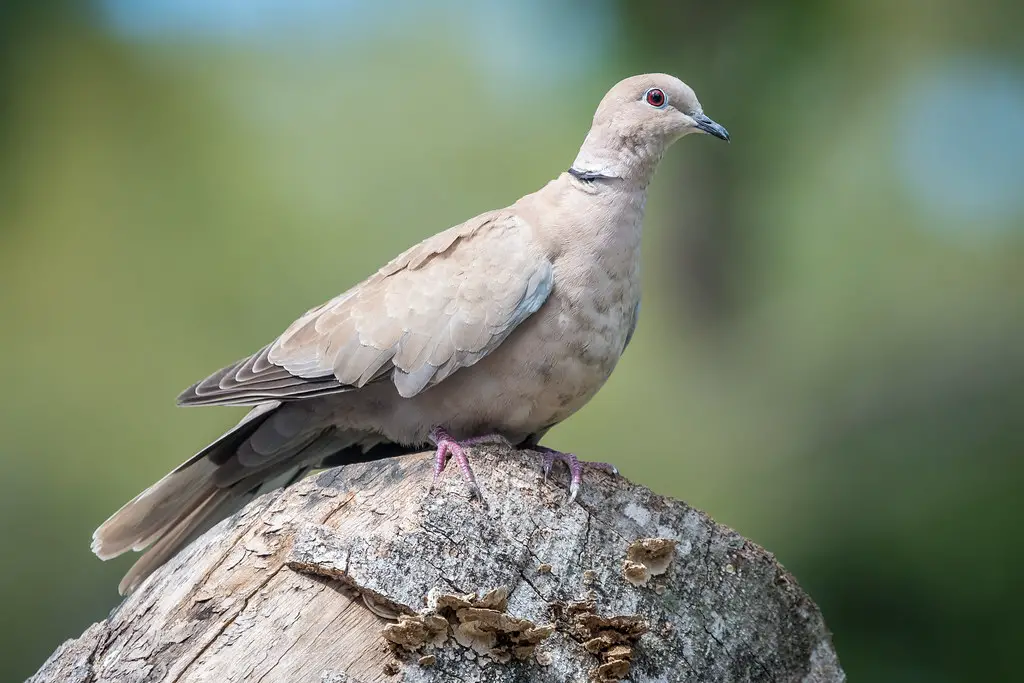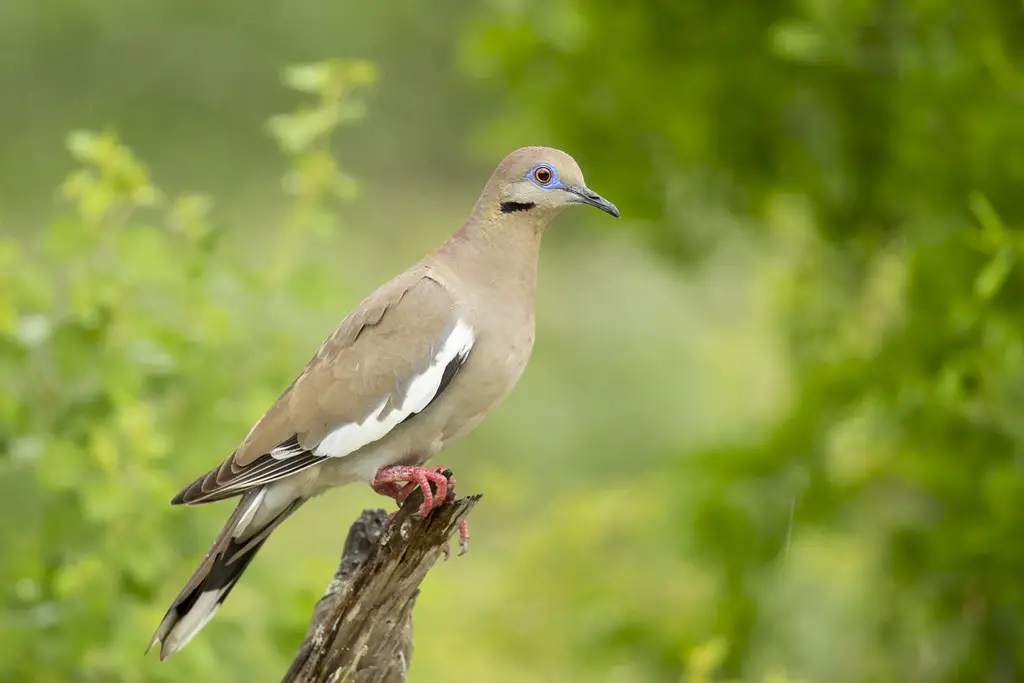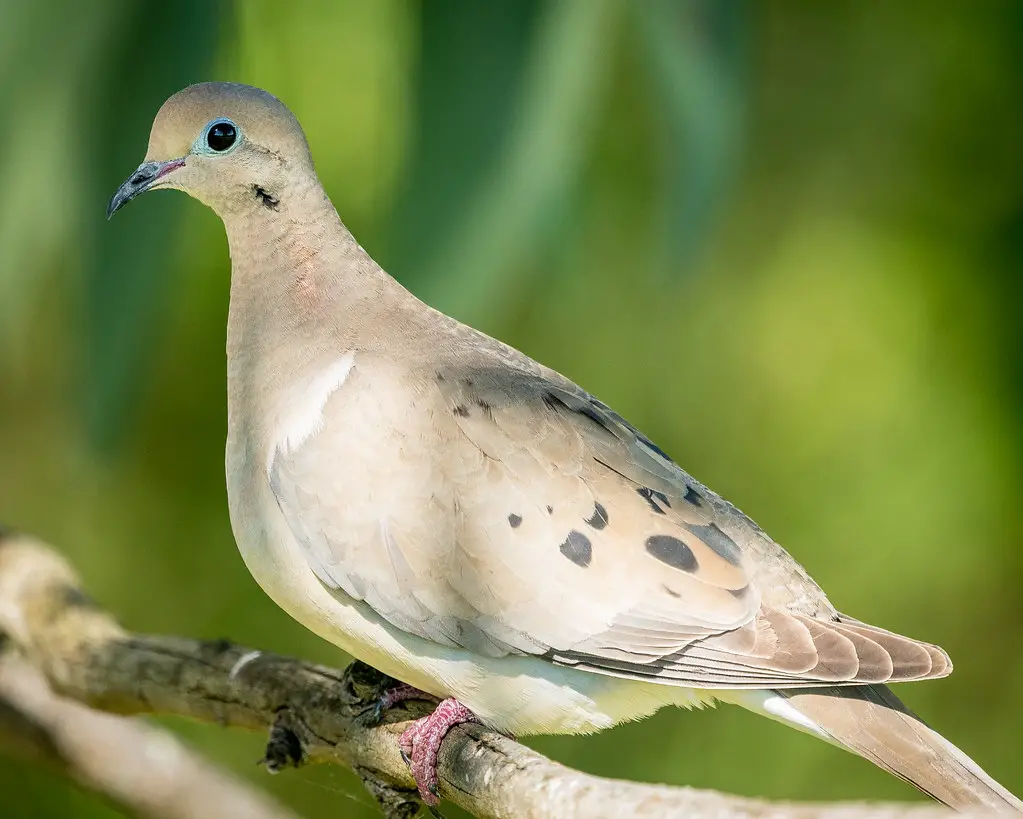Washington is known for its beautiful landscapes, ranging from the Olympic National Park to the North Cascades. The state is also home to a diverse array of wildlife, including several species of doves. If you’re a birdwatcher or nature enthusiast, you may be interested in learning more about the different types of doves found in Washington, their habitats, behaviors, and other interesting facts. In this blog post, we’ll explore doves in Washington and provide some insights into these fascinating creatures.
Types of Doves in Washington:
There are several species of doves in Washington, each with its own unique features and traits. Some of the most common ones are:
Mourning Dove:
Image Source
- Scientific name: Zenaida macroura
- Lifespan: 2-5 years
- Size: 9-13 inches
- Native to: Southern Canada to central Mexico
The Mourning Dove is the most common species of dove found in Washington. They are migratory birds and are found in Washington during the summer months. They have a distinctive cooing sound and their soft, delicate feathers are brownish-gray with black spots on their wings.
These doves have a unique appearance, with a white patch on their wings that contrasts with their light brown body. They also have a distinctive blue eye ring and a long, pointed tail. Both males and females look similar, but males tend to have a more vibrant plumage during the breeding season.
White-winged Doves are primarily seed eaters, but they also consume fruits, insects, and small snails. They are known to be opportunistic feeders and will eat a wide variety of food depending on what is available.
During the breeding season, these birds form monogamous pairs and build their nests in trees, shrubs, or cacti. Females usually lay two eggs, and both parents take turns incubating them for about two weeks. The chicks fledge after about two weeks and become fully independent about a week later.
White-winged Doves are famous game birds, and their populations are closely monitored by wildlife management agencies. They are also appreciated by birdwatchers for their unique appearance and behavior. In some areas, they are considered a pest because they can cause damage to crops and gardens. Overall, White-winged Doves are an important part of the ecosystem and play a role in seed dispersal and pollination.
Eurasian Collared-Dove:

Image Source
- Scientific name: Streptopelia decaocto
- Lifespan: 4-5 years in the wild, up to 12 years in captivity
- Origin: Native to Asia and Europe, introduced to North America in the 1980s
- Size: Length 12-14 inches, wingspan 21-24 inches
The Eurasian Collared-Dove is an invasive species that was introduced to the United States in the 1980s. They are larger than mourning doves and have distinctive black collars around their necks. Eurasian Collared-Doves are found in urban and suburban areas throughout Washington.
Their feathers are a pale grey-brown color and it has a red-orange eye-ring. This dove is known for its soft, cooing call which is a common sound in many urban and suburban areas.
Originally from Asia and Europe, the Eurasian Collared-Dove was introduced to North America in the 1980s and has since become a common sight across much of the continent. They are often seen perched on power lines or rooftops and are known to form large flocks in urban areas.
Eurasian Collared-Doves are opportunistic feeders and will eat a variety of foods, including seeds, grains, and insects. They are often found in gardens and agricultural areas where they can forage for food.
When it comes to nesting, Eurasian Collared-Doves are known for their adaptability and will use a variety of structures as their nesting site, including trees, shrubs, and man-made structures like buildings and utility poles. Their nests are often made up of twigs, grasses, and other plant materials and are typically located in a protected area like a tree or bush.
Overall, the Eurasian Collared-Dove is a fascinating bird that has adapted well to living in urban and suburban environments. Its distinctive appearance and soft cooing call make it a common sight and sound in many parts of North America.
Band-tailed Dove

The Band-tailed Pigeon is a native bird found in the western parts of Washington.
It is named after the distinctive band on its tail feathers.
These doves are about 13 inches long with a wingspan of approximately 23 inches. They have plump, round bodies, small heads, and long, pointed tails. Their plumage is generally grayish-brown with a lighter-colored head and neck.
Band-tailed Doves are primarily seed eaters, but they also consume fruits, insects, and snails. They are known to be opportunistic feeders and will eat a variety of food depending on what is available.
During the breeding season, these birds form pairs and build their nests in trees or shrubs. Females usually lay one or two eggs, and both parents take turns incubating them for about two weeks. The chicks fledge after about two weeks and become fully independent about a week later.
Band-tailed Doves are an important game bird, and their populations are closely monitored by wildlife management agencies. They are also appreciated by birdwatchers for their unique appearance and behavior. In some areas, they are considered a pest because they can cause damage to crops and gardens. Overall, Band-tailed Doves are an important part of the ecosystem and play a role in seed dispersal and pollination.
White-winged Dove

Image Source
- Scientific name: Zenaida asiatica
- Lifespan: 10-15 years
- Size: 11 in
- Native to: Southwestern United States through Mexico, Central America, and the Caribbean
The White-winged Dove is a rare visitor to Washington, but can occasionally be seen in the eastern parts of the state.
It is a large dove, measuring about 11 inches long, with a wingspan of approximately 20 inches. These doves have a unique appearance, with a white patch on their wings that contrasts with their light brown body. They also have a distinctive blue eye ring and a long, pointed tail. Both males and females look similar, but males tend to have a more vibrant plumage during the breeding season.
White-winged Doves are primarily seed eaters, but they also consume fruits, insects, and small snails. They are known to be opportunistic feeders and will eat a wide variety of food depending on what is available.
During the breeding season, these birds form monogamous pairs and build their nests in trees, shrubs, or cacti. Females usually lay two eggs, and both parents take turns incubating them for about two weeks. The chicks fledge after about two weeks and become fully independent about a week later.
White-winged Doves are famous game birds, and their populations are closely monitored by wildlife management agencies. They are also appreciated by birdwatchers for their unique appearance and behavior. In some areas, they are considered a pest because they can cause damage to crops and gardens. Overall, White-winged Doves are an important part of the ecosystem and play a role in seed dispersal and pollination.
Best Places to Spot Doves in Washington State:
If you’re looking to catch a glimpse of these peaceful birds, here are some of the best places to spot them in Washington State:
- Mount Rainier National Park: This stunning national park is home to a variety of wildlife, including doves. Look for them near water sources or in the meadows.
- Olympic National Park: This park is home to a diverse range of ecosystems, from rainforests to rugged coastlines. Look for doves near the streams and rivers.
- Chelan County: This area of central Washington State is known for its scenic beauty and is a popular spot for birdwatching. Look for doves in the orchards and vineyards.
Final Thoughts
Washington is home to several species of doves that play an important role in the state’s ecosystem. From the familiar Mourning Dove to the less common White-winged Dove, these birds can be found in a variety of habitats throughout the state. Doves are an important food source for predators such as hawks and falcons, and they also help to control weed populations by consuming seeds. However, like many bird species, doves face threats such as habitat loss, climate change, and hunting. To ensure the continued health of Washington’s dove populations, it is important to protect and preserve their habitats and to avoid overhunting. By taking action to support dove conservation efforts and learning more about these fascinating birds, we can help to ensure that they remain a part of Washington’s natural heritage for generations to come.
Frequently Asked Questions (FAQs)
When is the best time of year to see Doves in Washington?
Mourning Doves can be found in Washington year-round, but they are most abundant during the breeding season from April to August. Eurasian Collared-Doves can also be found year-round.
Where are the best places to go birdwatching for doves in Washington?
Doves can be found in a variety of habitats in Washington, including suburban and urban areas, agricultural fields, and desert scrub. Some popular birdwatching spots include McNary Wildlife Refuge, Turnbull National Wildlife Refuge, and the Potholes Reservoir.
Are there any conservation efforts in place to protect doves in Washington?
The Washington Department of Fish and Wildlife has established hunting seasons and bag limits for Mourning Doves and Eurasian Collared-Doves to ensure sustainable populations. Additionally, efforts are underway to control the spread of invasive species, such as the European Starling and House Sparrow, which can compete with doves for resources.



![4 Beautiful hummingbirds in Washington [Pictures + IDs]](https://birdsology.com/wp-content/uploads/2023/03/hummingbird-gd4061a1f9_1280-1-600x400.jpg)
![10 Beautiful Red Birds in Pennsylvania [Images + IDs]](https://birdsology.com/wp-content/uploads/2023/03/49129472308_2f2a1266aa_b-600x400.jpg)
![13 Species of Hawks In Colorado [Images + Ids]](https://birdsology.com/wp-content/uploads/2023/02/41986089062_3e62a67007_b-600x400.jpg)
![18 Beautiful Blue Birds in New Mexico [Images + IDs]](https://birdsology.com/wp-content/uploads/2023/09/52109509501_22164e9350_b-600x400.jpg)